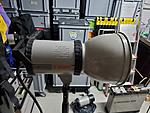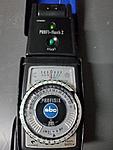Thanks for you thoughts Bernice,
I did the experiment again using a standard reflector.

Results are similar; a lamp with"U" shaped flash tubes produces between one third and half a stop less light than a lamp that has "O" shaped tubes.
At 3m and ISO100. an el404 generator together with a 4000 w/s (single "O" shaped) gets me a tad over f/64
At same distance, two el404 with an 8000 w/s (twin "U" shaped) gets me f/64 2/3.
I would have to check with Elinchrome, but I guess that this could be a reason why their latest twin-tubes heads are rated at 6000 w/s
This is still a lot of light, and sometimes half a stop is the difference that makes a good picture (plate..).
Andreas




 Reply With Quote
Reply With Quote

Bookmarks